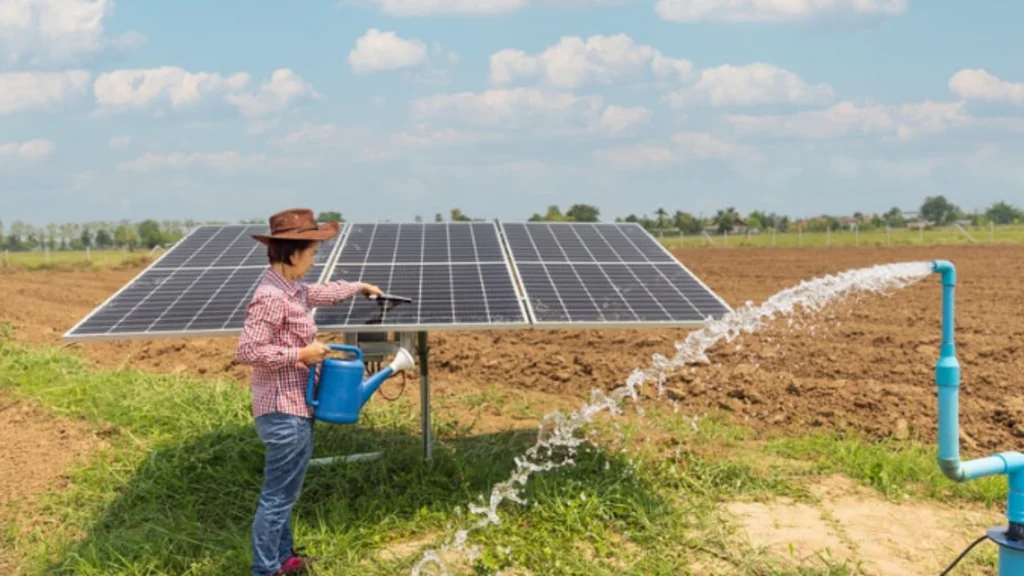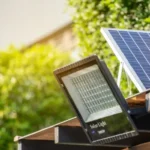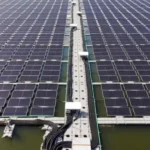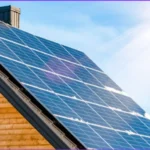What if your water supply could be powered entirely by sunlight? For homeowners in remote areas, farmers with irrigation needs, or off-grid adventurers, this isn’t a fantasy; it’s the growing reality of solar well pumps. With no fuel, no noise, and little maintenance, solar pumps are transforming how people access groundwater sustainably.
In this post, we’ll dive into everything you need to know about solar-powered water pumping how it works, who it’s best for, key system components, costs, and what real users are saying.

What Is a Solar Well Pump and How Does It Work?
A solar well pump is exactly what it sounds like: a water pumping system powered entirely by solar panels. Unlike traditional well pumps that rely on grid electricity or diesel generators, solar well pumps use solar energy captured from photovoltaic (PV) panels to draw water from underground sources.
Most systems fall into two categories:
- Submersible pumps (installed deep within the well)
- Surface pumps (for shallow wells or surface water like tanks and ponds)
Both types can be paired with direct current (DC) or alternating current (AC) solar pump inverters, depending on your setup and flow requirements.
Real-World Example
In rural Arizona, a rancher I recently consulted with installed a 1.5 HP solar well pump system featuring a 1,200 W solar array. He now irrigates 3 acres of pasture without touching the power grid or hauling diesel tanks. “It’s been a game-changer,” he told me. “Even on cloudy days, the pump runs enough to fill my tank.”
Why Choose Solar Well Pumps Over Traditional Pumps?
Off-Grid Freedom
If you live in a remote location where grid access is unreliable or expensive,well pumps offer true independence. Once installed, there are no monthly utility bills; instead, you have clean power from the sun.
Lower Operating Costs
Electric well pumps can cost hundreds of dollars annually in electricity, especially in areas with high electricity rates. Diesel pumps cost even more. Solar pumps operate for free, saving between $500 and $2,000 per year, depending on system size and usage.
Sustainable Water Access
Solar energy is clean, renewable, and abundant, particularly in regions that rely heavily on groundwater, such as the American Southwest, Africa, and Australia.

Key Components of a Solar Well Pump System
Let’s break down what you actually need.
1. Solar Panels
Typically sized between 500 to 3000 watts. The more panels you have, the greater your pumping capacity. For deep wells over 100 feet, you’ll need more wattage.
2. Pump Controller or Inverter
This device regulates voltage, prevents dry running, and optimizes pump performance, even in low-light conditions.
3. Pump (Submersible or Surface)
Choose based on water depth. Submersible pumps are designed to go deep, while surface pumps are ideal for lifting water from depths of 20 feet or less.
4. Storage Tank (Optional but Recommended)
Since solar only runs during the day, a large tank stores water for night use or cloudy periods.
5. Batteries (Optional)
If nighttime pumping is needed, deep-cycle batteries can store excess energy, but they do increase system cost and complexity.
How Much Do Solar Well Pumps Cost?
Cost depends on depth, flow rate, and tank storage. Here’s a general range:
| System Type | Approximate Cost |
| Shallow Well (30–50 ft) | $1,000 to $2,500 |
| Deep Well (100+ ft) | $2,500 to $5,000+ |
| Off-Grid with Batteries | $3,000 to $7,000+ |
Costs can be reduced with government rebates or USDA solar grants if you’re in agriculture.
Are Solar Pumps Any Good?
Yes when properly sized and installed. Today’s brushless DC motors and MPPT controllers enable solar pumps to operate efficiently even in partial sunlight, with lifespans of 10 to 20 years, depending on the model.
According to the National Renewable Energy Laboratory (NREL), solar pumps can maintain an efficiency of 70 to 85 percent in real-world conditions with minimal maintenance.
However, they do have limitations, which we’ll explore below.
Visit here : solar inverter charger.

Limitations of Solar-Powered Well Pumps
Like all technology, solar pumps aren’t perfect. Consider the following:
Sunlight Dependency
No sun means no pumping unless you add batteries or a tank. This makes tank storage essential for backup.
Initial Cost
Although operating costs are low, the upfront investment is higher than that of that of standard pumps.
Flow Rate Limitations
Solar pumps typically move 3 to 15 gallons per minute. High-volume farms may need hybrid systems or diesel backup.
Maintenance Tips to Maximize Solar Pump Performance
While solar pumps are low-maintenance, here’s how to keep yours in top shape:
- Clean solar panels monthly to prevent dirt buildup (losses can reach up to 20 percent in output)
- Inspect wiring and mounting after storms or strong winds
- Flush the pump filters every few months to prevent sediment buildup
- Check for dry-run protection to avoid damage if the well runs low
Do Solar Well Pumps Work at Night?
Only if you’ve paired them with battery storage or a gravity-fed storage tank. Otherwise, the pump only runs during daylight hours. A common off-grid strategy is to:
- Pump water during the day into a 1,000 to 3,000 gallon tank
- Use float valves and gravity to deliver water overnight
This avoids the need for batteries, which can degrade over time.
Click here : solar panels Effeciency.
Real Use Case: Solar Well Pump for Off-Grid Cabin
A client in British Columbia built an off-grid cabin near a creek but wanted to avoid using noisy generators. We installed a 750W solar array with a Grundfos SQFlex pump, which delivers water from a 90-foot well into a 1,500-gallon insulated tank.
“I haven’t touched the system in a year,” he said. “It just works—and it’s completely silent.”
How Long Do Solar Well Pumps Last?
- Solar panels: 20 to 25 years
- Pump motor: 8 to 15 years
- Controllers or inverters: 5 to 10 years
Routine maintenance, especially cleaning panels and inspecting seals, can significantly extend the lifespan.
Can a Fan or Other Appliance Run on the Same Solar System?
Yes. Once your solar array is sized appropriately, you can also run solar-powered fans, LED lights, or even small refrigerators off the same system, either directly through the current or via an inverter. Just be sure your load doesn’t exceed your solar generation capacity.

Final Thoughts: Should You Invest in a Solar Well Pump?
If you’re looking for energy independence, sustainable water access, and long-term savings, solar pumps are a smart investment. They are especially ideal for:
- Remote homes and cabins
- Off-grid farms and ranches
- Irrigation in sun-rich areas
- Eco-conscious homeowners
They’re reliable, cost-effective, and clean—and with the right setup, they can last for decades with minimal maintenance.
If you rely on a water well and haven’t upgraded to solar, now’s the time. Solar well pumps are quieter, cleaner, and more dependable than ever. Book a free consultation or system assessment today and see how much you could save by going solar.
FAQs
Are well pumps worth it?
Yes, for remote properties, off-grid living, and eco-conscious water access, solar pumps can provide long-term savings and reliable performance with minimal upkeep.
How much does a solar well pump cost?
The cost ranges from $1,000 to over $7,000 depending on depth, flow rate, and whether you include batteries or large storage tanks.
Can you run a well pump on solar power?
Absolutely. With properly sized solar panels and a compatible pump controller, solar power can run well pumps for homes, farms, and livestock watering.
What are the disadvantages of a solar water pump?
Initial costs are higher, performance depends on sunlight availability, and the flow rate may not match large diesel or electric pumps. However, most limitations can be managed with proper design.
What is the lifespan of a solar pump?
Solar panels last 20 to 25 years. Pump motors usually last 8 to 15 years, while inverters or controllers last 5 to 10 years with routine care.











